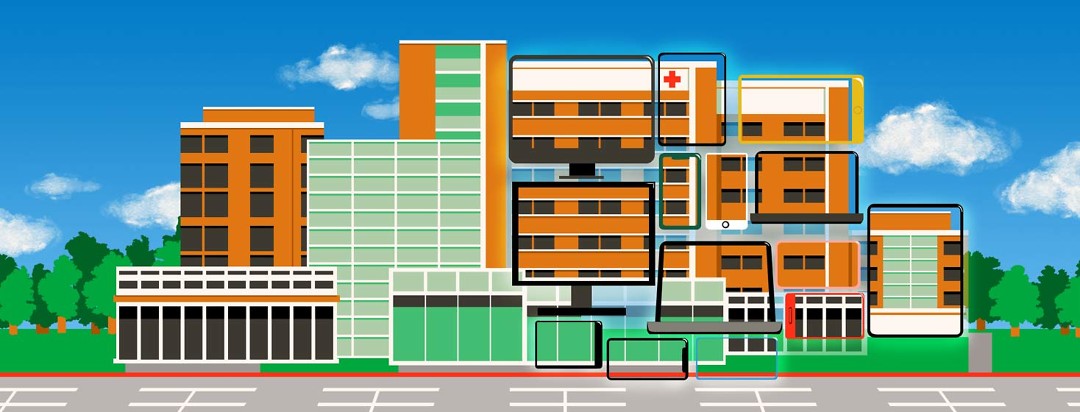Social Distancing Spurs Telehealth Surge
The technology needed for virtual healthcare has been around for decades. But virtual care has not been widely used in the United States until recently.
The recent public health emergency and need for physical distancing has changed this. Telehealth has gone mainstream quickly. This is because virtual care can reduce the demand on hospital ERs and doctor’s offices. And, relaxed federal restrictions have made telehealth easier for people and their doctors to use than ever before.
The rapid expansion of virtual care
With the spread of COVID-19, telehealth has quickly become a critical part of the U.S. healthcare system. For example, the weekly number of virtual appointments at one major hospital system increased by nearly 2,000 percent.1 Another major provider, the Teladoc service, doubled the number of patients they cared for between March and April 2020. By April, Teladoc was reporting over 20,000 virtual medical visits per day, with more than half being new patients.2
Virtual care is also being used for health services other than doctor appointments. New programs have introduced telehealth for paramedics and tele-intake in ERs. Tele-monitoring procedures for hospital intensive care units (ICUs) have been built very quickly from the ground up.1
Expanding virtual care is complicated, especially during a pandemic. To help with this, the federal government committed $200 million to fund new telehealth services. Hospitals and health centers can apply for this money to cover the cost of new devices, services, and personnel.3 This has made telehealth services available for the first time to many people that previously did not have this option available to them.
Non-technological issues have also been addressed during this time. For example, many Medicare restrictions have been temporarily lifted. And changes to the HIPAA privacy requirements has allowed for more ways to communicate virtually.1
The role of telehealth in “flattening the curve”
You may have seen charts that show the purpose of physical distancing. Slowing down the spread of COVID-19 “flattens the curve” of new cases. This lowers the peak number of cases and reduces the strain on our healthcare systems. A flatter curve means fewer cases and better overall care.1
Telehealth is an important tool to help flatten the curve. It does this by reducing demand on emergency rooms, and decreases the number of doctors and potentially sick people that come in contact with each other, and can help in tracking the spread of disease.
Reducing ER demand during a health emergency
If everyone who had potential symptoms of COVID-19 went to the ER, our hospitals would be overwhelmed. During a public health emergency, people who think they may have symptoms need to be triaged so that only people who require immediate advanced care go to the ER. Telehealth can help fill this role by streamlining the diagnosis and treatment process.
With virtual care options, people who need immediate treatment are more likely to get it without overwhelming hospital capacity which would delay care for more people. People who need information about symptoms can find it over the phone or by video chat. Those needing tests or medicine can be sent to a clinic, lab, or pharmacy. Then, those needing ER resources can be prioritized to get the help they need.4
Telehealth also helps limit exposure to people with COVID-19 infection. Doctors can monitor people remotely. This can also lower the demand for additional personal protective equipment (PPE). Tele-monitoring may also allow one doctor to provide care for multiple patients at the same time. This can help with doctor shortages at critical times.1,4
Reducing intake for other services
Across the country, many health resources have been redirected to treat COVID-19. Telehealth helps maintain the health of people with chronic conditions by providing them the option to have virtual appointments. People can also access many urgent care services using telehealth.
Virtual care also reduces travel to doctor’s offices. This is important for people at higher risk for infection, such as the elderly and people who may be immunocompromised. This can help limit their potential exposure to infected people.
Challenges to expanding telehealth
Most people who have used telehealth services agree that telehealth options should be incorporated into healthcare systems, even after the current crisis ends. As more payers cover services and legal restrictions change, it is likely that a wide range of telehealth options will continue. Insurance regulations, state licensing laws, and doctor payment rules will need to be updated to reflect how people are actually using and benefiting from these services.
Differences in access to the internet must also be addressed for telehealth to be widely embraced. Many people who have chronic health conditions, and are more at risk during a public health emergency, are less likely to have access to reliable online services, including telehealth. This includes elderly people, and many racial and ethnic minorities, who are less likely to have internet services at home.1

Join the conversation